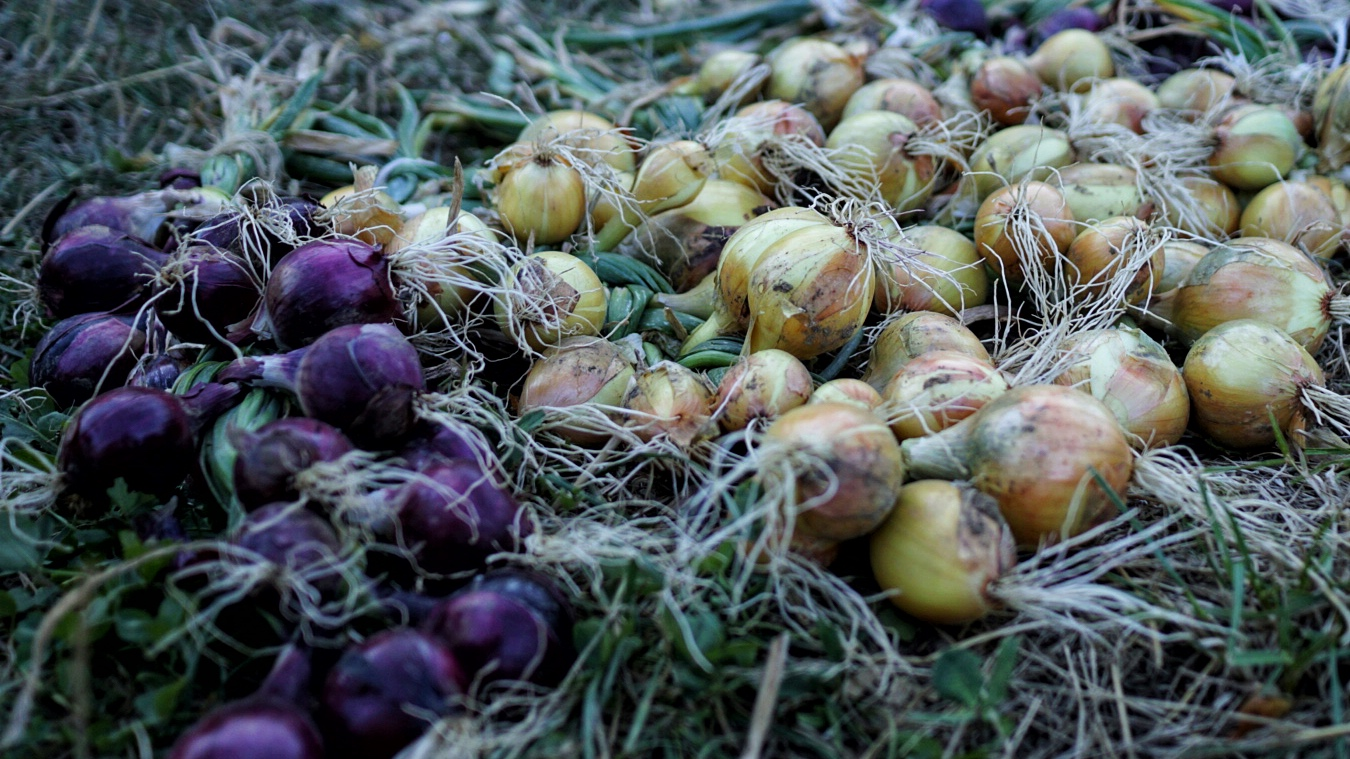
Harvesting and Storing Onions, Spring Onions & Shallots
Onions are an indispensable ingredient in the kitchen and are also a popular vegetable in the garden. There are a few things you need to know for a successful onion harvest. We give you tips on harvesting and storing onions, shallots and spring onions.
This Article Contains:
- Harvesting Onions: What You Need to Know
- When to Harvest Onions?
- Harvesting Shallots, Green Onions and Spring Onions
- Harvesting Spring Onions
- Storing and Drying Onions: The Right Way to Do It
- Storing Potatoes and Onions Together?
- What Is the Shelf Life of Onions?
- Storing Spring Onions
- Preserving Onions: Tips and Ideas
- Frequently Asked Questions About Storing Onions
Quick Overview
How to Harvest Onions:
- Spring onions are ready to harvest after around 60 to 90 days
- Onions and shallots stay in the bed longer and are ready to harvest after 100 to 150 days
- For onions and shallots, wait until the green onions are dead, yellow and bent over before harvesting them
- Choose a dry period without rain for harvesting onions
- Allow onions to dry in the field or in another dry place (exception: spring onions)
- With spring onions, you can harvest the greens several times if you leave the heart and some bulbs standing
How to Store Harvested Onions:
- After harvesting, leave the onions to dry. To do this, you can either hang the onions on a string or weave an onion plait. After one to two weeks, the onions are ready for storage
- The perfect place to store onions is in an airy, dry, dark and cool place
- Onions can also be stored without a cellar as long as the location has the properties described above
- Onions should not be stored in the fridge due to the high humidity (except spring onions)
- Avoid storing potatoes and onions together, as this will cause the potatoes to spoil more quickly
Harvesting Onions: What You Need to Know
Depending on which type of onion you harvest, the onion harvest works a little differently. In the case of onions and shallots, the storage onions are used. Here it is particularly important that you are careful when harvesting and do not damage the onions. These onions can be stored intact. Spring onions are eaten whole and their greens can even be harvested several times if you do it right. Harvest while the green is still fresh. You can find tips and everything you need to know about Planting, Caring for and Harvesting Onions in this article.
When to Harvest Onions?
Depending on the variety, onions take different lengths of time to mature. Spring onions, for example, can be harvested 60 to 90 days after sowing, while onions usually take between 100 and 150 days to reach harvest maturity. You should be aware that sown onions tend to stand longer in the field. It is therefore important to know the respective variety and plan the harvest accordingly.
The right time to harvest onions also depends heavily on the growing season. You can plant them in the fall, in which case they will be ready to harvest around May/June. Spring-planted onion sets can be harvested between July and September. There are also winter onions. These are onions sown or planted in the fall that can be harvested in the spring. Depending on the variety, you can harvest shallots either in early summer or fall. We explain below what you need to bear in mind when harvesting the individual types of onion.
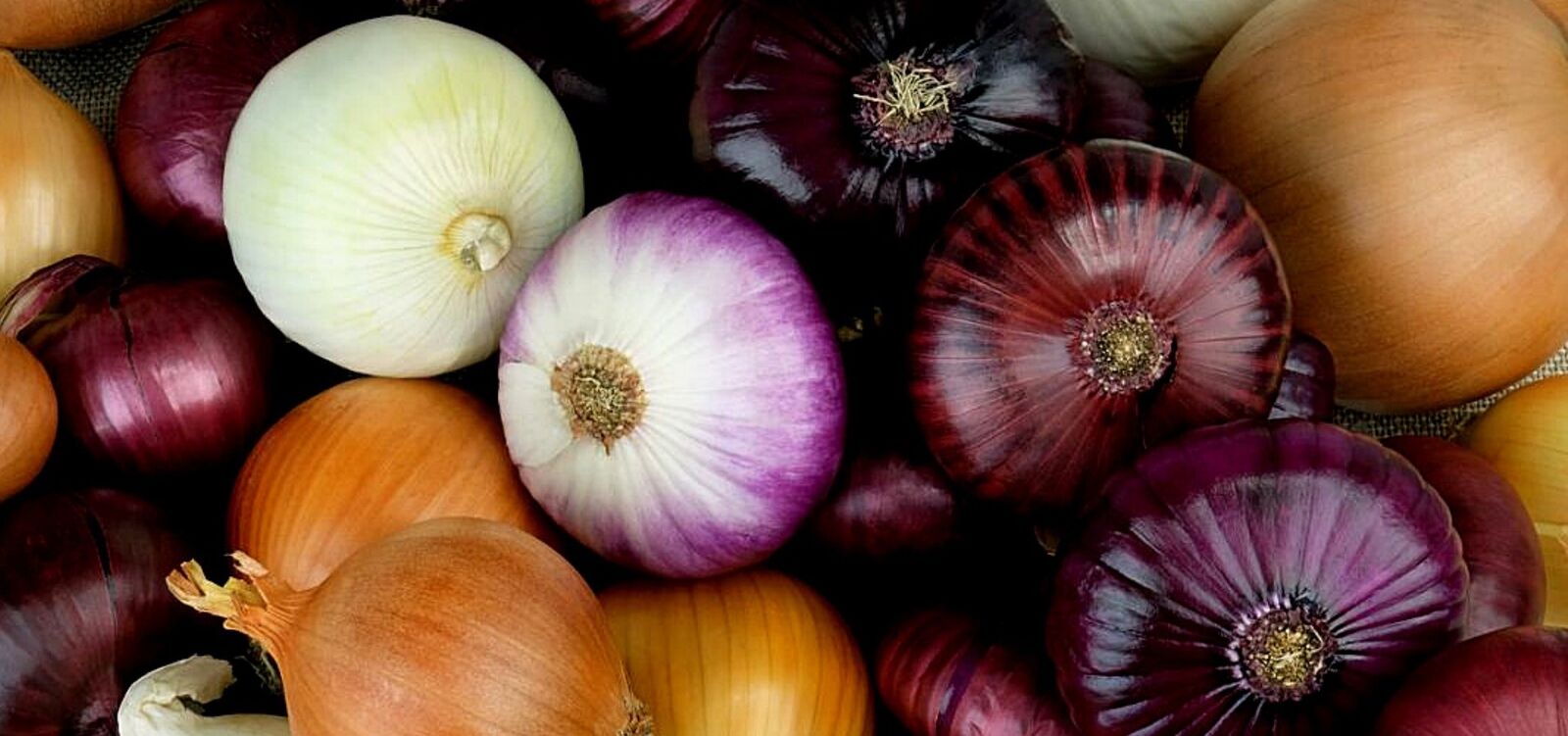
Harvesting Shallots, Green Onions and Spring Onions
You can tell when it's the right time to harvest onion sets, shallots and the like by the dead, bent leaves. In the case of onion varieties where only the bulbs are harvested, this is a good indicator that the onion harvest is about to start. If the foliage slowly turns yellow and dries out, loosen the soil around the bulbs with a digging fork a few days before harvesting. In this way, the roots lose contact with the soil and ripening is accelerated. Ripening is not accelerated by kicking over the onion foliage. The foliage dies because the bulbs store the nutrients in the roots. Trampling hinders this process and the bulbs tend to rot. During a period of dry weather without rain, you can then carefully pull the bulbs out of the soil. The skin or leaves should not be damaged, then they can be stored for longer.
Before you store these bulbs, you should lay them out in a dry and well-ventilated place for about two weeks to dry out. In warm, dry weather, you can also simply leave the onions to dry out in the field for a few days. Ideally, the onions should not touch each other. However, if it is rainy, this will only encourage mold growth and rotting.
Our tip for harvesting onions: You can eat the green parts of all onions. As your shallots and onions grow, you can harvest onion greens and enjoy them fresh. However, make sure you always leave enough shallots for the onions to grow well.
Harvesting Spring Onions
Spring onions and scallions are harvested young and tender. They have a fairly mild flavor and are ideal for fresh consumption. After around three months, spring onions are ready to be pulled out of the ground. However, you can harvest onion greens from a height of around 15 centimetres and use them fresh. Do not cut too deeply so that the heart remains standing. You should also leave a few bulbils so that the plant reliably sprouts again.
Harvesting Perennial Spring Onions
Among the spring onions there are also perennial varieties, the spring onions. This variety can easily survive in the bed and can be harvested again and again. After sowing in spring, you can harvest them fresh all year round. With the frosts, it retreats into the soil and sprouts again in spring. In the second year, the cut onions begin to flower and the spring onion will self-seed if you leave it alone.
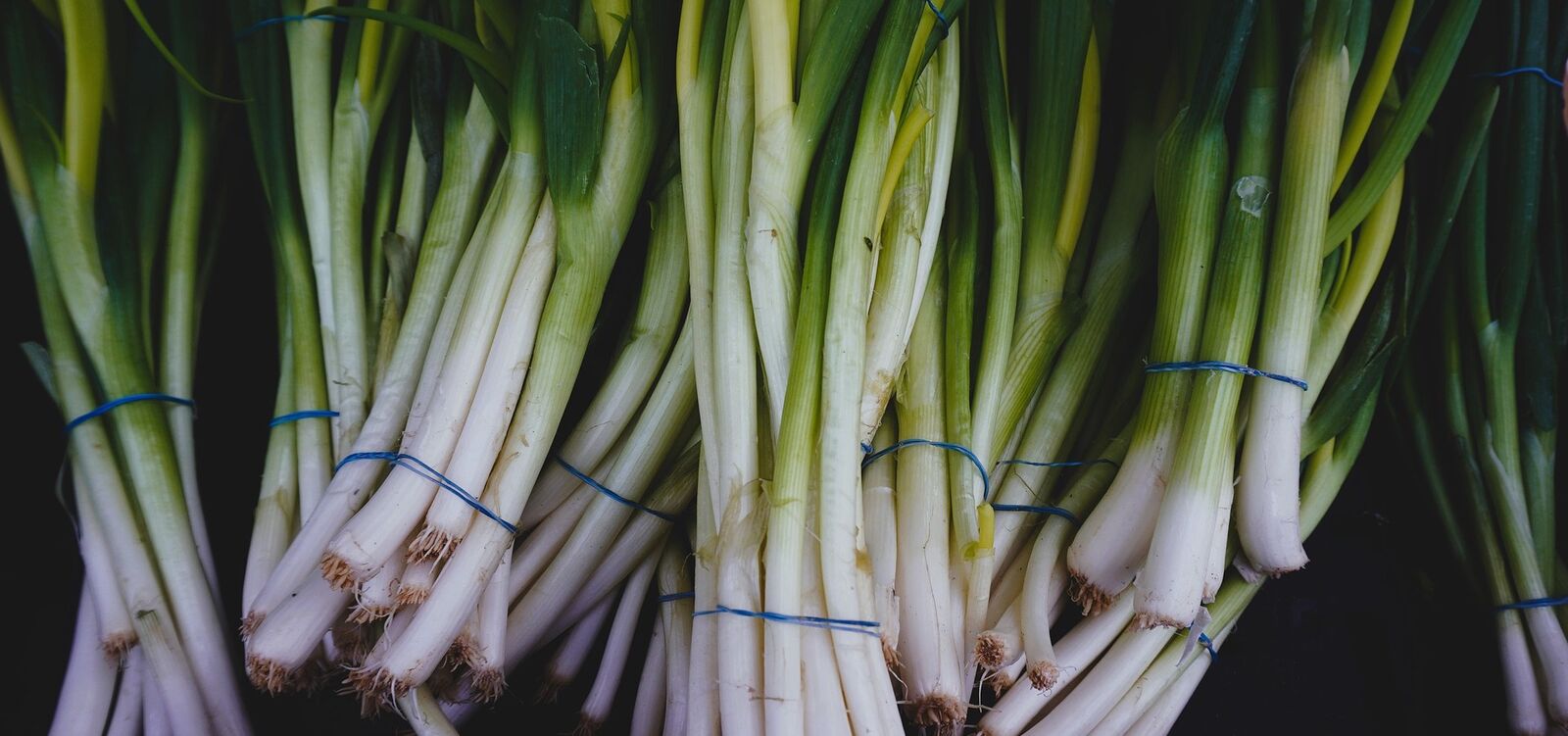
Storing and Drying Onions: The Right Way to Do It
There are many different types of onions, from red and white onions to shallots and spring onions. When harvesting and storing onions, it is important to pay attention to the characteristics of the individual varieties. Red onions, for example, have a thinner skin than white onions and are therefore more sensitive to damage to the skin. The same applies to shallots - their skin is particularly thin and they must be harvested and stored with care. Winter onions are completely different. Although these onions are usually smaller, they have a thick skin that makes them particularly durable.
How to Store Onions Properly?
Storing onions is an important step to ensure that they keep for a long time without rotting or going moldy. There are various ways to store onions properly, depending on your preferences and available space. However, it is important that the storage space is airy, dry and dark. It should also not be too cold, as temperatures around 5 ° C/41 ° F will only encourage the bulbs to sprout again - a relatively cool, temperate room around 10 ° C/50 ° F is better. On the other hand, the room should also be protected from particularly cold temperatures and be frost-proof. After drying, either remove the dry foliage and store the bulbs in nets or boxes. Alternatively, you can braid the onions together directly after harvesting and then hang them up like this. Braiding onions is a particularly nice way to store onions. This way they dry out and can be stored straight away.
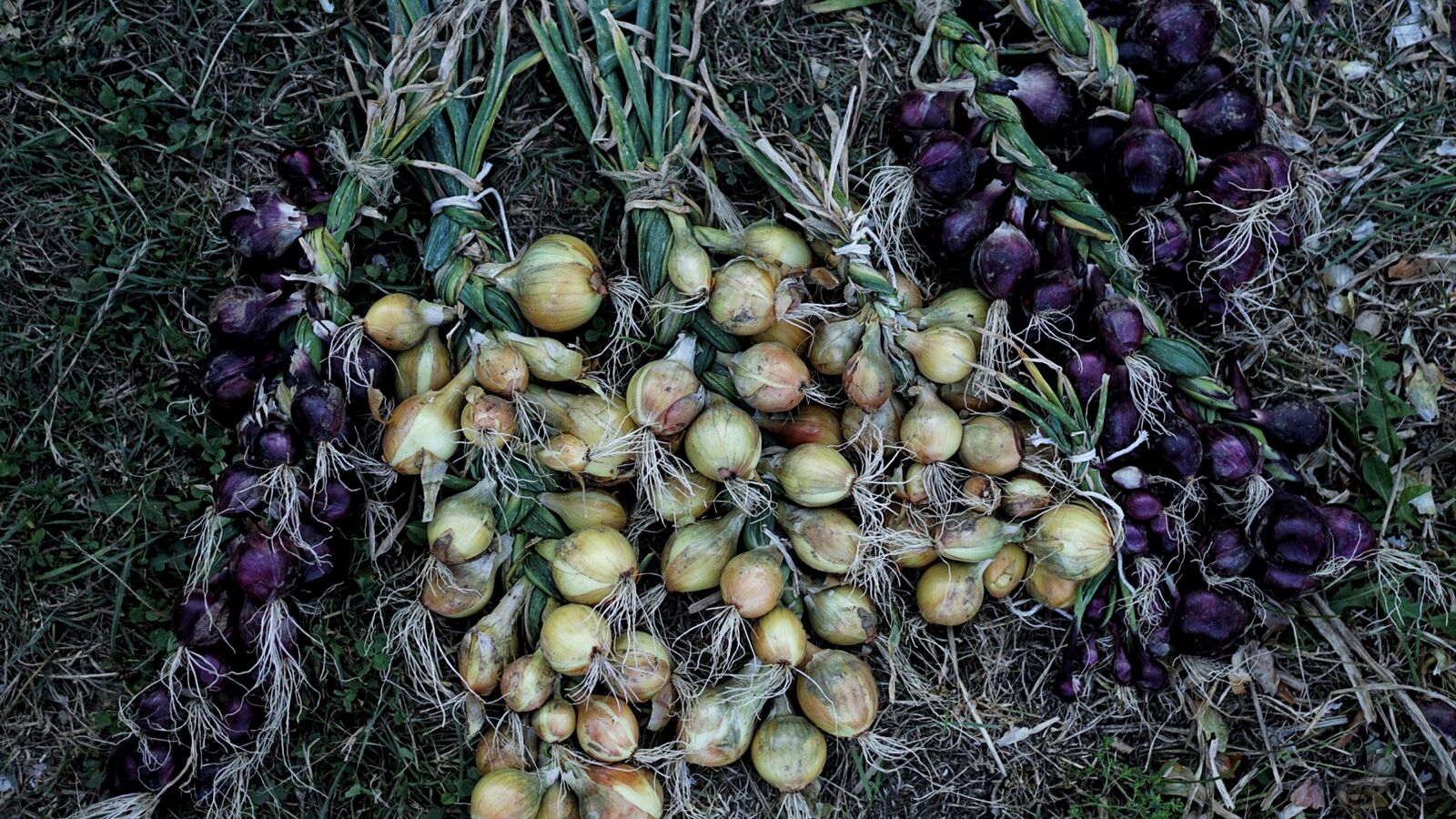
Storing Onions Without a Cellar?
Onions can also be stored successfully without a cellar. The storage location just needs to meet the criteria mentioned above (cool, dark, well ventilated). Cellars often have a relatively high humidity anyway, which is why a different location is usually not a bad idea. Use a mesh or jute bag to allow the air to circulate and prevent the onions from becoming moldy. Make sure to check them regularly for rot or mold to ensure a long shelf life. If an onion is moldy or rotting, you should dispose of it immediately.
Store Onions in the Fridge?
One of the most common mistakes when storing onions is to keep them in the fridge. This place is not suitable for storing onions due to the high humidity. They only become soft and lose their aroma and taste. High humidity also increases the risk of mold and rot. If there is no other way and you want to store a cut onion in the fridge, you should wrap it well in cling film. Do not use aluminum foil for this, as it reacts with the onions, giving them a slightly metallic taste. Spring onions, on the other hand, are great for storing and preserving in the fridge. You can find out more about this in the article below.

Learn More About When to Harvest Onions
In our library you will find information on the individual varieties with cultivation periods, tips on planting and harvesting. You will also find good and bad companion plants to help you plan a mixed crop.
Visit Library NowStoring Potatoes and Onions Together?
Onions and potatoes should not be stored together because they require different storage conditions. Although potatoes also need a cool and dark storage location, the difference is that they require a higher level of humidity than onions.
In addition, onions release ethylene, a ripening gas that accelerates the ripening process of some fruits and vegetables. Potatoes are sensitive to ethylene and spoil more quickly if you store potatoes and onions together. They start to shrivel and sprout, making them inedible. The moisture released by the potatoes, in turn, can cause onions to mold or rot more quickly. It is therefore best to store them separately to extend their shelf life.
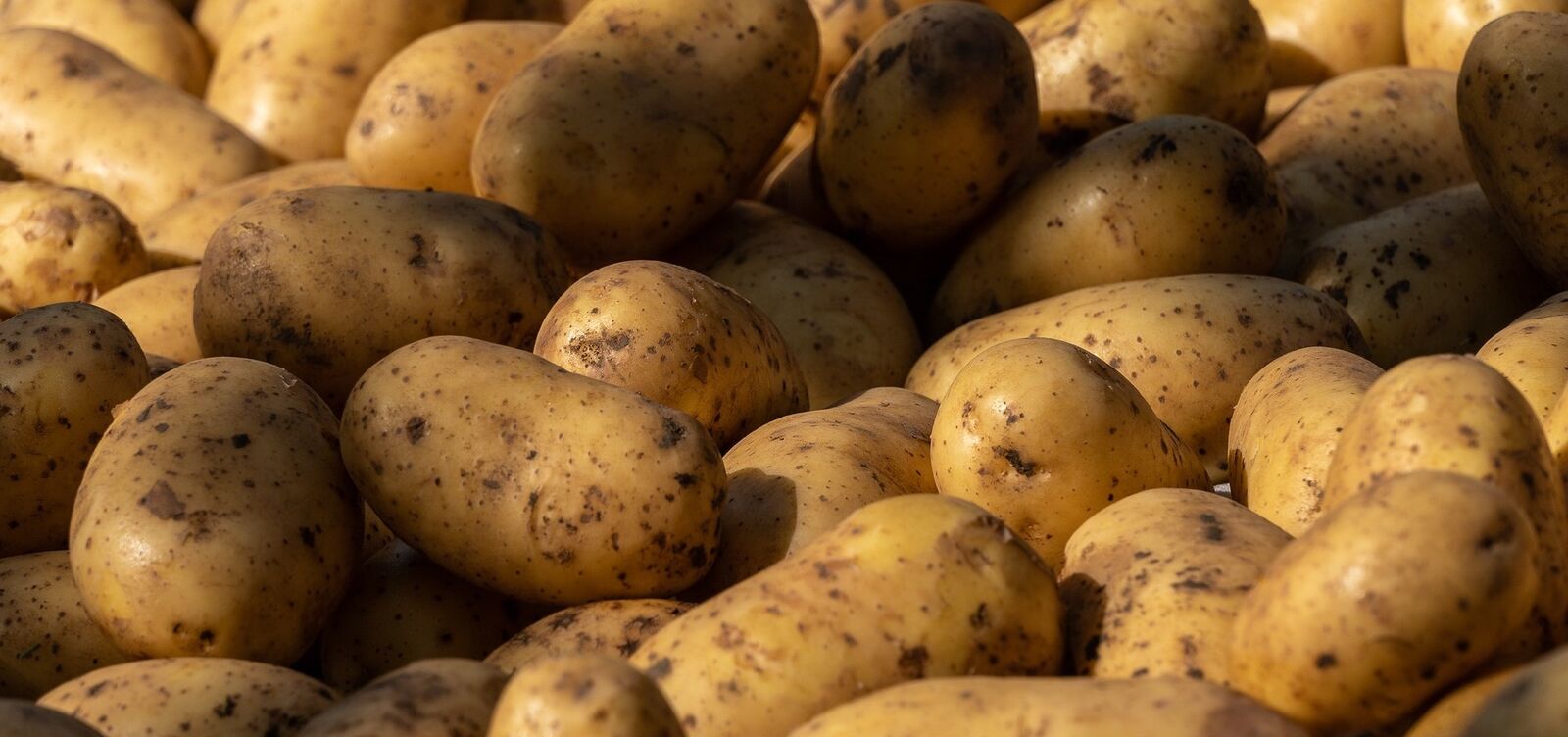
What Is the Shelf Life of Onions?
The shelf life of onions varies greatly depending on the variety. Spring onions, for example, are not storage onions and can be stored in the fridge for a maximum of one to two weeks. The situation is different for green onions, shallots and winter onions. These types of onion can usually be stored well, with storage periods varying between 2 and 5 months.
Here Is an Overview of How Long You Can Store Onions:
- Vegetable onions: Depending on the variety, onions can keep for several months if stored correctly. Yellow onions generally keep longer (up to 6 months) than red or white onions (around 2 to 4 months).
- Shallots: Shallots can usually be stored for 2 to 3 months if kept under the right conditions.
- Winter onions: Winter onions are tough and can last up to 5 months or even longer if stored correctly. They have a particularly thick skin, which increases their shelf life.
Storing Spring Onions
Spring onions, also known as scallions, should be stored differently to conventional onions. To keep them fresh, first cut off the green parts and store them separately or eat them fresh. Wrap the white parts of the spring onions in some damp kitchen paper or a clean cloth. You can now store them in an open or slightly opened plastic bag in the vegetable drawer in the fridge. Unlike green onions, you can store spring onions in the fridge for one to two weeks without any problems! The green parts can also be stored in the fridge in the same way.
Freeze Spring Onions: Extend Shelf Life
Alternatively, you can also freeze spring onions to preserve them for a longer period of time. To freeze them, pack the spring onions in a plastic bag or Tupperware. If you like, you can cut them into small pieces beforehand. Then you can take out a little whenever you need it and use it fresh. They will keep for several months without any problems, although the texture usually suffers a little from freezing.
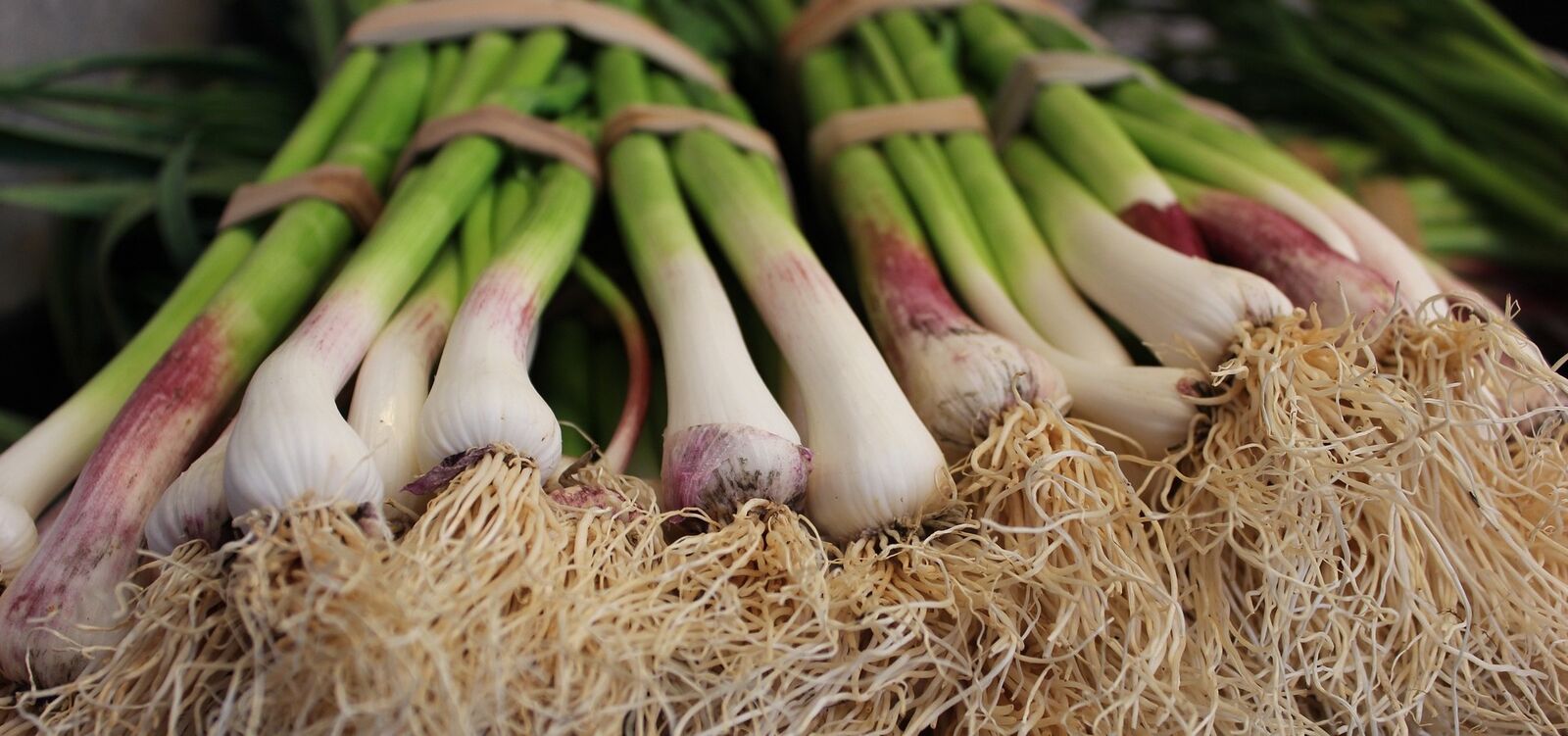
Preserving Onions: Tips and Ideas
There are various ways to preserve onions so that you can enjoy them for longer. In addition to the classic method of storing whole, intact onions, you can also preserve them using numerous other methods.
Drying Onions
Cut the onions into thin slices or rings and place them on a baking tray or in a dehydrator. The onions should now dry at a low temperature of between 50 and 60 ° C/122 and 140 ° F for several hours until they are completely dry. Now store the dried onions in an airtight container in a cool, dark place.
Freeze Onions
Peel and cut the onions into pieces of your desired size. Now blanch them in boiling water for about 1-2 minutes. The onions must then cool directly in ice water. Dry the onions with a kitchen towel and pack them in freezer bags or containers. Finally, label them with the date and they are ready for the freezer. Frozen onions will keep for up to 6 months or longer.
Pickling Onions
Peel and cut the onions into slices or rings. Next, prepare the preserving solution from vinegar, water, sugar and spices and heat it up. Now place the onions in sterile preserving jars and pour the hot preserving solution over them. Finally, seal the jars and set aside to cool. Pickled onions will keep for several months in a cool, dark place.
Preserving Onions
To make onion marmalade or chutney, cook the onions together with sugar, vinegar and spices until they are soft and caramelized. Fill the finished jam or chutney into sterile jars, seal them and store them in a cool, dark place. Onion jam or chutney will also keep for several months.
You can find more tips and detailed instructions on Preserving Fruit and Vegetables in this article. However, always remember that most of these methods will change the texture and taste of the onions.
If you have any questions or comments on this topic, please write to us at magazin@fryd.app.
Would you like to receive helpful gardening tips all year round and plan your own beds optimally? Then register here or download the Fryd app for Android or iOS.
Fryd - your digital bed planner
Marie
Current Topics in the Community

#red , #tuesday

Liked 1 times
#testpostcount

Dec 2025
Popular Articles

Companion Plants for Carrots: What (Not) to Plant With Carrots

Companion Plants for Celery : What (Not) to Plant With Celery?

Strawberry Types: List of Best Strawberry Varieties

Companion Planting With Strawberries: Companion Plants and Planting Plan

Basil Varieties & Types at a Glance

What to Plant With Cabbage: Good and Bad Companion Plants

Fertilizing Strawberries: Home Remedies & Natural Fertilizers at a Glance

Growing Sweet Potatoes: Tips on Cultivation & Companion Plants

Companion Plants for Kitchen Herbs: Chives, Parsley & Co

What Herbs Can Be Planted Together?
FAQ
Why not store onions next to potatoes?
Onions should not be stored next to potatoes because onions secrete ethylene. This causes the potatoes to spoil more quickly, become shriveled and start to sprout.
Onions should be stored in a cool, dark and well-ventilated place. The place should also be dry, so a refrigerator is not suitable. Only spring onions can be stored in the fridge without any problems.
Onions are ready to harvest when their skin is firm (depending on the variety) and dry. The green part of the onion should also be yellow, dried out and bent over. Spring onions are harvested with green husks.
How long do onions need to dry?
Onions should be left to dry for about two weeks after harvesting until they are stored. This reduces the risk of mold and rot and increases their shelf life.